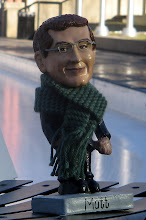 Santaolalla's score had many notable qualities, though, beyond its catchy main theme. Ironically, NPR commentator Andy Trudeau praised the score largely for its subtle, spare textures and its lack of big, rousing themes. In a film about plain-spoken men with unspeakable longings, the score seemed to capture the perfect mixture of honest simplicity and subtle complexity. That swelling chorus comes only after over two hours of unfulfilled tensions, when the film grants Ennis a moment of nostalgic release.
Santaolalla's score had many notable qualities, though, beyond its catchy main theme. Ironically, NPR commentator Andy Trudeau praised the score largely for its subtle, spare textures and its lack of big, rousing themes. In a film about plain-spoken men with unspeakable longings, the score seemed to capture the perfect mixture of honest simplicity and subtle complexity. That swelling chorus comes only after over two hours of unfulfilled tensions, when the film grants Ennis a moment of nostalgic release.Contests like these seem to invite disagreements and differing opinions, and even a film like Brokeback Mountain has its critics. What make the Academy Awards an interesting exercise, rather than just a promotional tool or popularity contest, are the conversations it prompts about art, aesthetics, and our national values. In a broad, diverse culture, film is the one art form which almost everyone can follow passionately and express their opinions forcefully. Those opinions often say as much about us as the films we discuss - this year seems to have been an exceptional one for serious films which engage and provoke, but maybe that just reflects a nation and culture engaged by serious, provocative issues.
If art imitates life, we seem to be struggling towards a new kind of heroic figure. It seems strange that the lead awards have recently gone to actors impersonating other real-life celebrity performers - Truman Capote, Ray Charles, June Carter Cash, etc. These roles clearly demand a great deal, and show off the actor's craft in fascinating ways - we are still stunned by portly, deep-voiced Phillip Seymour Hoffman's transformation into pixie-ish, effeminate Capote. They also require an added dimension, since we already know these characters so well, in both their charms and their faults. Foxx's Ray Charles and Hoffman's Capote each made a familiar figure newly ambiguous and complex, recreating a magical rise to stardom and the human failings of a lifetime in a contracted span of two hours or so.
 I take it as a positive sign that we seem to be drawn to these complex, conflicted portrayals, rather than white-washed panegyrics. Perhaps it means that our popular film culture is moving towards a more complex, subtle, and fully-realized view of the world, closer to the literary cultures that preceded it.
I take it as a positive sign that we seem to be drawn to these complex, conflicted portrayals, rather than white-washed panegyrics. Perhaps it means that our popular film culture is moving towards a more complex, subtle, and fully-realized view of the world, closer to the literary cultures that preceded it.In accepting the award for Best Adapted Screenplay, Larry McMurtry reminded Oscar watchers how much the cinematic art owes to its roots in literature. Several of this year's leading films grappled with those roots directly, examining the lives of journalists and authors. It might seem like ages since a serious, adult book could capture the public's imagination so completely as a film, or influence the culture so compellingly. It wasn't really so long ago though, and the author's name isn't so unfamiliar, even to our movie-obsessed era -
When the book itself was published in January, 1966, the modern media machine - magazines, newspapers, television and radio - became a giant band that played only one tune: Truman Capote. He was the subject of twelve articles in national magazines, two half-hour television programs, and an unparalleled number of radio shows and newspaper stories. His face looked out from the covers of Newsweek, Saturday Review, Book Week, and The New York Times Book Review, which gave him the longest interview in its history. Life ran eighteen pages, the most space it had ever given a professional writer, and advertised its huge spread by continuously flashing the words In Cold Blood on the electronic billboard in Times Square. "Such a deluge of words and pictures has never before been poured out over a book," observed a somewhat dazed-sounding reporter for The New York Times. The downpour would have been even greater if he had not refused many interviews, including an offer to become the first writer to appear on television's Meet the Press, which usually favored politicians and statesmen.
- Gerald Clarke, Capote: A Biography, p. 362


 Technorati Link Count: no. of blog reactions to this post
Technorati Link Count: no. of blog reactions to this post
No comments:
Post a Comment